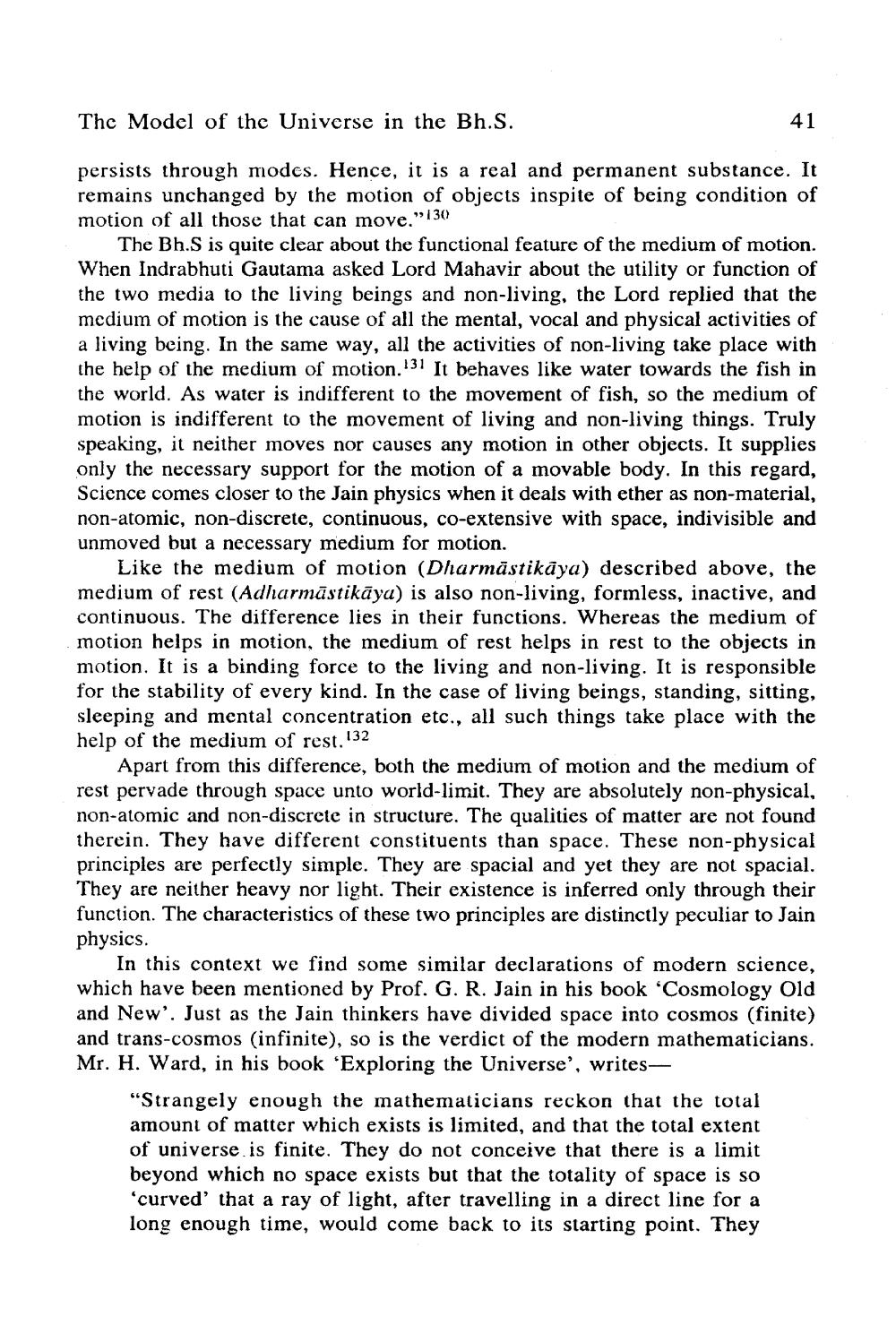________________
The Model of the Universe in the Bh.S.
41
persists through modes. Hence, it is a real and permanent substance. It remains unchanged by the motion of objects inspite of being condition of motion of all those that can move."130
The Bh.S is quite clear about the functional feature of the medium of motion. When Indrabhuti Gautama asked Lord Mahavir about the utility or function of the two media to the living beings and non-living, the Lord replied that the mcdium of motion is the cause of all the mental, vocal and physical activities of a living being. In the same way, all the activities of non-living take place with the help of the medium of motion.!31 It behaves like water towards the fish in the world. As water is indifferent to the movement of fish, so the medium of motion is indifferent to the movement of living and non-living things. Truly speaking, it neither moves nor causes any motion in other objects. It supplies only the necessary support for the motion of a movable body. In this regard, Science comes closer to the Jain physics when it deals with ether as non-material, non-atomic, non-discrete, continuous, co-extensive with space, indivisible and unmoved but a necessary medium for motion.
Like the medium of motion (Dharmāstikāya) described above, the medium of rest (Adharmāstikāya) is also non-living, formless, inactive, and continuous. The difference lies in their functions. Whereas the medium of motion helps in motion, the medium of rest helps in rest to the objects in motion. It is a binding force to the living and non-living. It is responsible for the stability of every kind. In the case of living beings, standing, sitting, sleeping and mental concentration etc., all such things take place with the help of the medium of rest. 132
Apart from this difference, both the medium of motion and the medium of rest pervade through space unto world-limit. They are absolutely non-physical, non-atomic and non-discrete in structure. The qualities of matter are not found therein. They have different constituents than space. These non-physical principles are perfectly simple. They are spacial and yet they are not spacial. They are neither heavy nor light. Their existence is inferred only through their function. The characteristics of these two principles are distinctly peculiar to Jain physics.
In this context we find some similar declarations of modern science, which have been mentioned by Prof. G. R. Jain in his book 'Cosmology Old and New'. Just as the Jain thinkers have divided space into cosmos (finite) and trans-cosmos (infinite), so is the verdict of the modern mathematicians. Mr. H. Ward, in his book 'Exploring the Universe', writes
"Strangely enough the mathematicians reckon that the total amount of matter which exists is limited, and that the total extent of universe is finite. They do not conceive that there is a limit beyond which no space exists but that the totality of space is so 'curved' that a ray of light, after travelling in a direct line for a long enough time, would come back to its starting point. They




